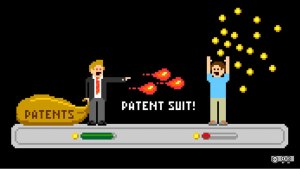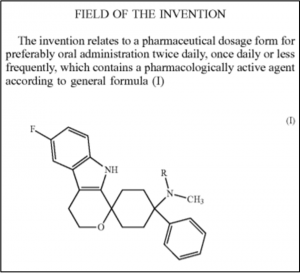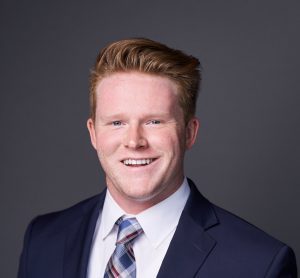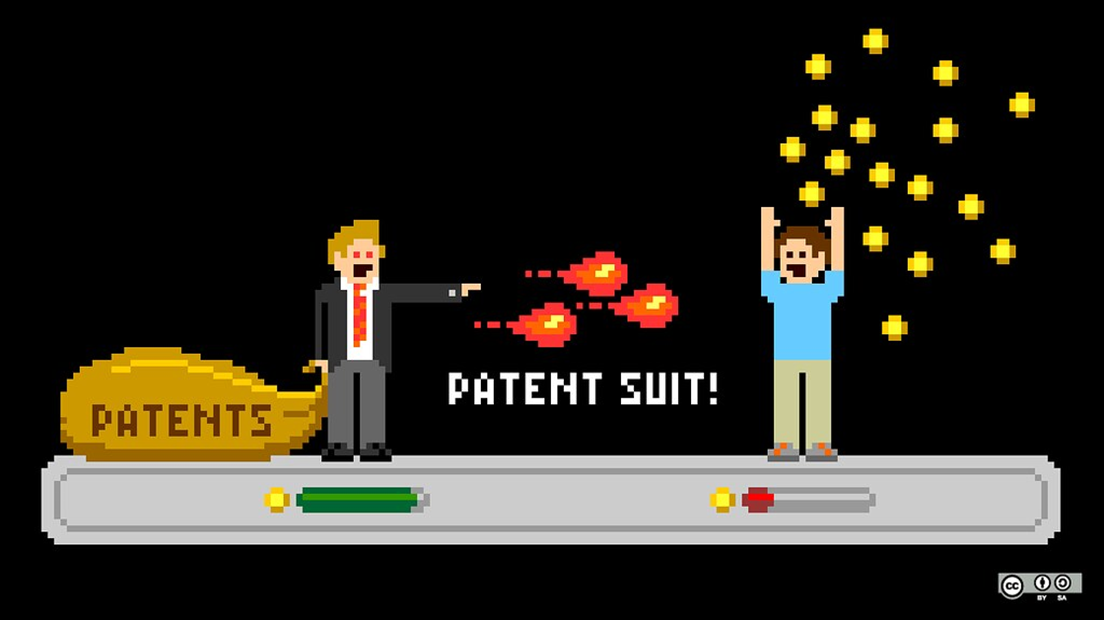I came to Loyola with an interest in intellectual property, specifically patents. Patents are granted by a country to protect inventions by granting the inventor certain rights. When it came time to start my job search for my 1L summer, I knew I wanted to try and get experience in the field of IP. In every IP interview I’ve had thus far, the interviewer has always asked what kind of patent law I want to practice. Do I want to “prosecute” patents, meaning writing and obtaining a patent for an inventor? Or, do I want to litigate issues for granted patents? These are the two most common areas of patent law. In my early interviews, I would answer patent litigation. I have previous experience as a litigation consultant prior to law school, and have always romanticized being a trial attorney. However, as I gained interview experience and spoke with more attorneys, I realized there were many different areas of patent law of which I had no idea existed. I realized I had an interest in a lot of them. After learning more about these fields, I was able to better tailor my job search to firms that offered those types of patent law.
For Starters, What Are the Basics Patent Law? Do You Need a Science Background?
Patent law is a subset of intellectual property law that deals with inventions – either products or processes. Patents are granted to inventors by individual countries and provide inventors rights over the patented invention. The patent owner in the U.S. can exclude others from making, using, selling, offering for sale, or importing the patented invention, typically by suing others in federal court.
While some areas of patent practice require a scientific or technical background, others do not. This is because the United States Patent & Trademark Office (USPTO) requires a person to pass the patent bar exam to represent an inventor in front of the office. A pre-requisite to take this exam only permits certain technical backgrounds.
Patent Prosecution: Obtaining the Patent for the Inventor
Patent prosecution refers to the process of drafting and filing a patent application, and otherwise interacting with the USPTO. Because you’re representing an inventor in front of the USPTO, you must have a technical background for this field.
Drafting an application may not sound difficult. However, patent applications require expertise. This includes creating the patent claims, which define the legal scope of the invention. A patent claim is a single sentence that describes the invention. A patent may have a single claim or hundreds of claims. Importantly, an inventor only gets protection for what’s in the claims – the rest of the patent is there to help understand the claims. Thus, technical expertise to accurately and effectively write a patent claim is vital to the invention that gets patented.

However, a patent prosecutor’s job doesn’t end when the application is filed. Once filed, the patent is “prosecuted” before the USPTO. A patent examiner at the USPTO review the invention to determine whether it meets the statutory requirements to get a patent. Almost all patent applications will not meet the requirements on their first attempt. The patent examiner will usually reject the application and let the patent prosecutor know what’s wrong with the application. The prosecutor then fixes the issues and sends it back to the patent examiner for another review. This back-and-forth continues until the patent is either granted or given a final rejection, which can be appealed.
Patent Litigation: Fighting Claims of Patent Infringement
A major area for patent lawyers is litigation. This is the area that I’m personally drawn to. Why? Because you get the chance to analyze and interpret a wide range of technologies while finding holes in the opposition’s argument and understanding of the invention. The high-stakes impact in which a patent infringement claim may have for a client makes the field challenging, rewarding, and exciting for attorneys.
Patent litigation involves infringement of the exclusive rights granted to patent owners. Unlike patent prosecution, a scientific or technical background is not required to practice patent litigation. While some firms may prefer patent litigators to have a scientific or technical background, any lawyer can get involved in patent litigation.
A patent owner who believes that another party has violated their rights may file patent infringement claims in federal court. An attorney who specializes in patent litigation typically helps file such cases. Attorneys practicing patent litigation will either pursue or defend patent infringement (i.e. violation of a patent) claims for their clients throughout all stages of litigation. What are those stages? Let me explain.
An attorney representing a patent owner in litigation will typically draft and file the complaint. The complaint starts the lawsuit. It gives a factual background of the case and identifies the specific patent claims being asserted against the defendant (i.e. which of the patent’s claims have been infringed by the defendant). Attorneys representing the defendants will then submit an answer to the complaint, which typically denies any infringement of the patent claims and identifies potential defenses to patent infringement. The patent owner must also submit a disclosure called infringement contentions, which contain a claim chart identifying specifically which elements of each claim are infringed by the defendant’s product or process. Attorneys for both sides will then conduct discovery to help prove their case. This includes requesting information from the other party, exchanging documents, conducting depositions (formal oral questioning) of experts and people knowledgeable on the case, and answering written questions called interrogatories.

Parties will then argue over the interpretation of the terms in the patent claims. This occurs in a proceeding called claim construction, also known as a Markman hearing. Claim construction is a critical part in patent litigation. This stage of patent litigation requires the litigating attorney to most effectively interpret that claims to best help your clients position, either by making the claims as general as possible or as narrow as possible.
After the parties put forth their desired claim constructions, the judge will make a ruling on what the claims mean. Claim construction can make or break a patent litigation case. Why? An expansive claim construction ruling could mean that the defendant’s product fits under that expansive interpretation and thus the defendant is infringing the patent owner’s rights.
After claim construction, the parties will prepare and defend motions asking the court to rule on various aspects of the case. Most often, these are Motions for Summary Judgment asking the judge to rule in favor of a particular party based on what would be evidence at trial. If the judge denies all motions, and the parties don’t settle, the case will go to trial. However, most cases will never make it to trial. Trial is a time consuming and expensive process that parties typically like to avoid since patents are worth a lot of money. Thus, many patent cases either settle or are decided by a motion.
Patent Office Appeals and Challenges: Litigating Before the PTAB
Patent disputes may be resolved by the Patent Trial and Appeal Board (PTAB) as an alternative or supplement to patent litigation. Like patent prosecution, an attorney practicing before the PTAB must have a scientific or technical background and have passed the Patent Bar.
The PTAB hears appeals for patent applications that have been rejected by the patent examiner. The patent owner may appeal any rejection by the patent examiner during prosecution. The PTAB also conducts trial proceedings. These trial proceedings relate to to patentability challenges (i.e. arguments why the patent should not have been granted) by third parties in post-grant reviews or inter partes review, both of which occur after a patent has been granted to the inventor. Additionally, the PTAB trial proceedings also evaluate appeals from covered business method patents (a special type of patents for business methods), and derivation proceedings.
Patent attorneys will either initiate proceedings at the PTAB on behalf of their clients, or defend challenges asserted at the PTAB against their clients.
“Other” Patent Litigation: ITC Section 337 Investigations & Preventing Unfair Imports to the U.S.
Investigations under Section 337 of the Tariff Act relate only to the patent owner’s right to exclude others from importing their invention into the United States. They permit a patent owner to enforce this right in a special proceeding before the U.S. International Trade Commission (ITC). Section 337 investigations are considered a subset of intellectual property litigation. Like patent litigation, no scientific or technical background is required.
So, what do attorneys do who practice in this field? Attorneys conducting Section 337 investigations perform many of the same functions of regular litigation, such as filing a complaint, conducting discovery, and holding trial. However, Section 337 actions are on an accelerated timetable. They reach trial much more quickly than federal district court litigation. Trials typically occur in under one year before the ITC versus 2-4 years in federal district courts. The ITC ultimately determines whether Section 337 has been violated. If so, the ITC issues an order banning imports of the infringing goods or requiring a party to stop all commercial activity relating to the infringing products.
“Other” Patent Litigation: Special Drug Patents
There is a special type of patent litigation that exists only in the pharmaceutical industry. Specifically, there are special causes of actions against generic versions of traditional drugs and biosimilars of primarily injected or infused drugs (like insulin). As this is a subset of patent litigation, a scientific or technical background is not required. Attorneys practicing this type of litigation often have a medical-related background, however, this is also not required.

For generic drugs, the Hatch-Waxman Act permits a pharmaceutical company to seek FDA approval for a generic version of a drug before the original brand drug’s patent(s) has expired. This permits generic drugs to enter the market earlier. Generic drug companies can apply for early FDA approval if they establish that the generic drug is the same, or bioequivalent, to the brand name drug, and thus is safe and effective for consumers. This application must also certify that the proposed generic drug either does not infringe the patent(s) on the brand drug, or that the brand drug patent(s) is invalid. This certification constitutes a special type of infringement, allowing the original brand drug company to challenge that certification and sue the generic drug company. This is often referred to as ANDA litigation since the certification process is part of a streamlined drug approval whose full name is an “Annotated New Drug Application” (ANDA). This litigation has its own specific timeline, and incentivizes quick litigation.
A similar process as generic drugs is available for biosimilars. Under the Biologics Price Competition and Innovation Act (“BPCIA”), an applicant attempting to receive approval for a biolsimilar may try to clear the patent rights of the biological product owner, which initiates a procedure called the “patent dance.” This results in multiple waves of litigation.
IP Transactions and Licensing: Transferring & Managing Patent Rights
IP transactions allow a company to launch new products or services by acquiring patents from a current owner. IP licensing allows a patent owner to retain ownership over a patent while giving another party permission to make, use, sell, or import the invention for a specific time for a particular fee or royalty payment. IP acquisition allows a patent owner to sell the patent to another entity entirely, either by buying the patent itself or buying the company that owns the patent. Both acquisition and licensing precludes any patent infringement claim from being filed against the user, because they have been given rights in the patent. Attorneys practicing IP transactions and licensing do not need a scientific or technical background.
Attorneys assist companies in IP transactions and licensing through conducting due diligence on technology, negotiating acquisitions, mergers or licenses, and integrating parties’ intellectual property. Due diligence requires an investigation by the attorney to determine the value of a company’s intellectual property. Attorneys may also assist companies in managing their IP portfolios (i.e., the company’s collection of patents, trademarks, copyrights, and trade secrets) to protect and maximize IP rights associated with a product or service.
How to Choose a Practice Area or Firm Based on Your Patent Law Interests
Knowing about the different areas of patent law allows you to identify your own interests and tailor your career goals towards certain practices. For me, I knew I was interested in patent litigation. But once I learned more about ITC Section 337 proceedings and PTAB disputes, I knew that I wanted to get experience in those areas of patent law as well. Thus, I applied to firms that offered both patent litigation as well as ITC and PTAB work.
This is important because law firms may offer differing patent law services depending on the size or location of the firm. There may be an IP boutique firm that does mostly patent prosecution work. Some firms only offer patent litigation, in which you won’t get any experience in patent prosecution. Other firms may treat patent litigation as part of their general intellectual property litigation practice. In that case, you would not specialize only in patent infringement cases, but also work on copyright and trademark litigation as well. It’s important to know what firms offer and what types of experiences you may want to get when applying to IP positions.
I’m looking forward to practicing patent litigation, as well as gaining experience in ITC proceedings and disputes at the PTAB. The exposure to different technologies and industries that I am able to experience through patent law makes me thankful that I chose to attend law school.

Jack Hynes
Associate Blogger
Loyola University Chicago School of Law, J.D. 2023
